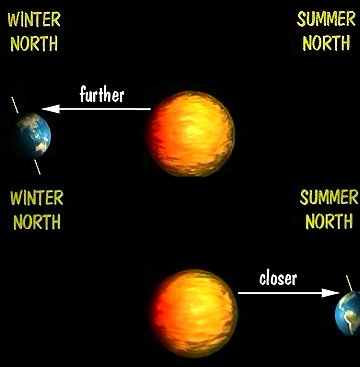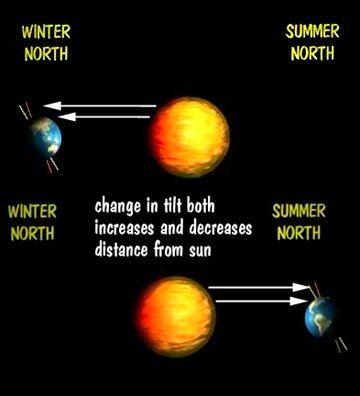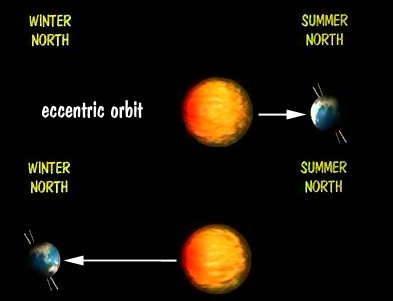
The short cycle is apparently due to fluctuations in the earth's orbit and the earth's tilt. The difference between our summer and winter is simply the slight variation in the direction of tilt as the earth orbits the sun.
In the northern hemisphere we have summer as the northern pole points in the direction of the sun, and we have winter when the pole points in the opposite direction.
If the axis were tilted more or less, the severity of the summer and the winter would be increased. Secondly the earths orbit around the sun has an eccentricity. (Is not circular, but is more elongated at times.) This too changes the amount of solar radiation reaching the surface and affecting the weather patterns.
The astronomical data is sufficient to explain the timing of the patterns but insufficient to provide the driving force for the needed temperature loss.

Although the reasons have not been correlated (meaning we don't know why) air samples from the last ice age show us that greenhouse gases were far lower. CO2 and Methane were only fractionally as high as today. Apparently this lowering is sufficient to push the atmosphere in the direction of mass cooling.
Atmosphere from the last ice age?
remember those deep sheets of ice in Greenland and the Antarctic? Core samples taken at depth bring up air bubbles that existed about 100,000 year ago. Sampling those small air bubbles lets us look back at the atmosphere of the age.
The loss of these gases can account for about 1/2 of the temperature lowering needed for an ice age. It is likely that there is some correlation here.
The same air bubbles also show a strong increase in atmospheric dust,. The reason for this is still a mystery, but large dust clouds would also decrease the earths temperature by reflecting solar radiation.
Ocean circulation is also related strongly to weather. Warm currents bring warm water northward and heat what would otherwise be a very cold north. As the water moves northward it becomes cooler as it releases its heat to the atmosphere and sinks. If the surface water were cooled or had reduced salinity (lower density) this movement of energy and sinking would cease and warm air would not be created in the northern hemisphere.
Fresh water will tend to stay on top even as it cools due to the loss in density. The loss in salt (reduction of salinity) would be helped by the formation of ice sheets and the loss of natural weathering processes.

| NEXT | TOC | PREV |